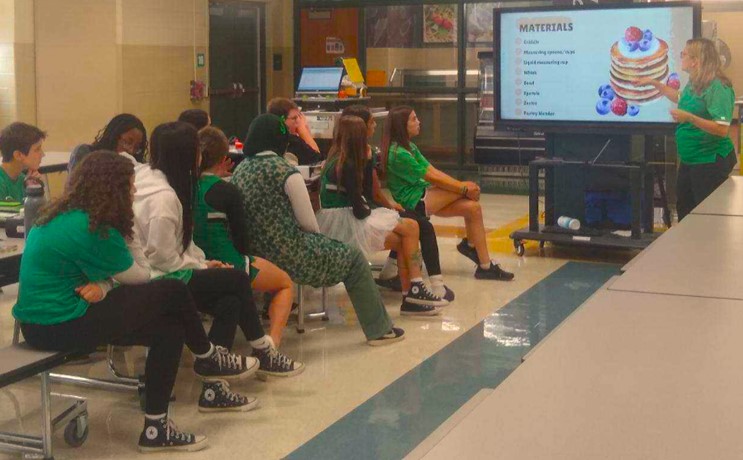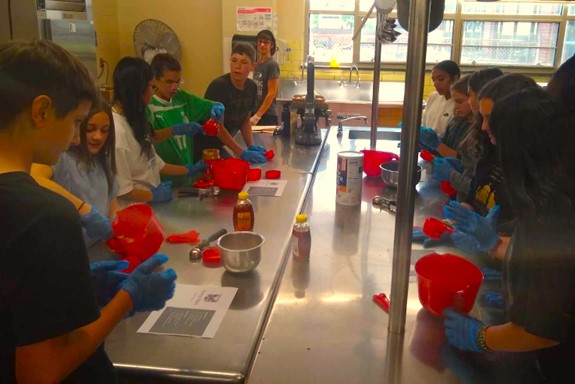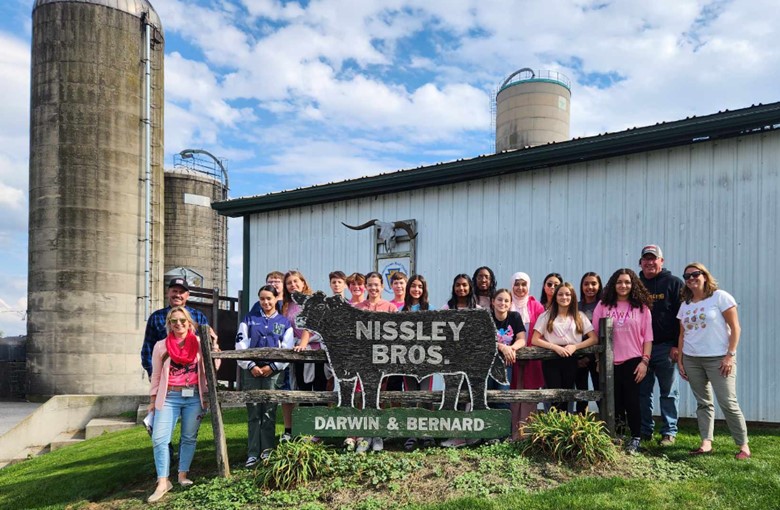Donegal School District in Mount Joy, Pennsylvania, created a cooking club this school year for seventh and eighth grade students. Food Service Director Kelly Price, a trained chef and dietitian, was excited to get the club up and running. “We wanted to help students explore different cooking techniques, while at the same time, learn from where their food is sourced,” said Price.

Price and district food service staff designed the club to help students work on skills like measurement conversions, plate presentation techniques, proper use of cooking equipment, food safety, and sanitation practices. Lessons were developed to build student confidence in the kitchen -- enough to make the recipes at home. “Applying these life skills will hopefully help them gain confidence in the kitchen and promote a healthier lifestyle into adulthood,” Price explained.
The club meets on Friday afternoons for an entire semester. Each student is partnered with a teammate who they work with throughout the semester. To start the meetings, students prepare to cook by watching a presentation and discussing the equipment needed, the ingredients, the history of the recipe, and any additional information that could enhance the lesson for the day.

Students then head into the kitchen to wash their hands and put on gloves. “Due to limited time, our staff try to ‘prep’ ahead as much as we can, but we leave the chopping, measuring, and cooking techniques for the students to complete themselves,” said Price.
One popular recipe produced by the students is No-Bake Energy Bite. Students learn the proper use of measuring cups and spoons for both dry and liquid ingredients, while using whole grains, flax seed, honey, and peanut butter. The resulting tasty snack proves that healthy food can also be delicious. At the end of each lesson, students are given a printed recipe and are excited to take home what they prepared during class for family members to enjoy.
Students in the cooking club were first introduced to cooking equipment while preparing five different varieties of pancakes. They learned how an electric griddle can be versatile, safe, and easy to use. The pancake lesson also utilized a juicer, microplane grater, and sifter, further adding to their newfound knowledge base.
Students also learn the importance of presentation. During a “Mise en place” lesson, they were given semi-prepped charcuterie pieces to assemble and design a charcuterie board to take home. “We talked about color, texture, and folding sliced meat to develop height and interest,” Price said. “Students even learned about the curing process of meat.”

Speaking of meat, the cooking club recently took a field trip to a beef farm, extending lessons beyond the four walls of the school. According to Price, it was an excellent bridge between the cooking club and the farm to school program. Students worked with the PA Beef Council and got “boots on the ground” experience learning everything from what the animals eat, how they are cared for, and what the farms do to ensure a successful end product. Following the beef farm visit, students prepared a meatball recipe and learned what those 80/20, 85/15, and 90/10 numbers on ground beef labels actually mean.

Price, along with the district’s dietetic interns and café managers, take immense pride helping the students learn each week and say it’s been an extremely rewarding experience for everyone.
The club takes advantage of nutrition education materials found on the FNS website including the “Dig In” resources, the “Grow It, Try It, Like It” garden-themed education kit, as well as making great use of MyPlate tools.

